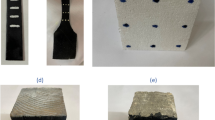Abstract
Photoelastic materials develop colored fringes under white light when subjected to mechanical stresses, which can be viewed through a polariscope. This technique has traditionally been used for stress analysis of loaded components, however, this can also be potentially used in sensing applications where the requirement may be measurement of the stimulating forces causing the generation of fringes. This leads to inverse photoelastic problem where the developed image can be analyzed for the input forces. However, there could be infinite number of possible solutions which cannot be determined by conventional techniques. This paper presents neural networks based approach to solve this problem. Experiments conducted to prove the principle have been verified with theoretical results and finite element analysis of loaded specimens. The developed technique, if generalized, can be implemented for whole-field analysis of the stress patterns involving complex fringes under different loading conditions. This can also provide direct visualization of the stress field, which may find application in a variety of specialized areas including biomedical engineering and robotics.











Similar content being viewed by others
Notes
8-bit Red intensity curves across the line of interest.
References
Ramesh K (2000) Digital photoelasticity: advanced techniques and applications. Springer, Berlin Heidelberg New York.
Ajovalasit A, Barone S, Petrucci G (1995) Towards RGB photoelasticity: full-field started photoelasticity in white light. Exp Mech 35:193–200.
Quiroga J, Botella A, Gomez-Pedrero J (2002) Improved method for isochromatic demodulation by RGB calibration. Appl Opt 41(17):3461–3468.
Ramesh K, Deshmukh S (1996) Three fringe photoelasticity-use of colour image processing hardware to automate ordering of isochromatics. Strain 32(3):79–86.
Patterson E (2002) Digital photoelasticity: principles, practice and potential. Strain 38:27–39.
Patterson E, Hobbs J, Greene R (2003) A novel instrument for transient photoelasticity. Soc Exp Mech 43(4):403–409.
Asundi A (2002) MATLAB for photomechanics: a primer. Elsevier, Amsterdam, The Netherlands.
Patterson D (1996) Artificial neural networks: theory and applications. Prentice Hall, Englewood Cliffs, NJ.
Bishop C (1995) Neural networks for pattern recognition. Oxford University Press, London, UK.
Noroozi S, Amali R, Vinney J (2003) Inverse problem approach using photoelastic analysis and artificial neural networks in tandem. Strain 40(2):73–77.
Chung D (1998) Neural net based torque sensor using birefringent materials. Sens Actuators A, Phys 70(3):243–249.
Cameron A, Danial R, Durrant-White H (1988) Touch and motion. Proc—IEEE Int Conf Robot Autom 1–3:1062–1067.
Eghtedari F, Hopkins S, Pham D (1993) Model of a slip sensor. Proc Inst Mech Eng B 207:55–64.
Dubey VN, Crowder RM (2005) Photoelasticity based dynamic tactile sensor. ASME international design engineering technical conference. DETC2005-84362. Long Beach, CA (USA), Sept. 24–28.
Photoelastic Materials (1992) Bulletin S-116-G Vishay Measurement Groups (USA).
Introduction to stress analysis by the Photostress method (1989) Tech Note, TN-702-1 Vishay Measurement Groups (USA).
Zandman F, Redner S, Dally JW (1977) Photoelastic coatings. Society for experimental stress analysis (SESA) monograph.
Photoelastic Coatings, TECH NOTE, TN-704-1 (1994), Vishay Measurements Groups (USA).
Freeman J, Skapura D (1992) Neural networks: algorithms, applications and programming techniques. Addison-Wesley, Reading, MA.
Bharath R, Drosen J (1994) Neural networks and statistical analysis. McGraw-Hill, New York.
MatLAB Manual (2002) Mathworks.
Davis B (1993) Foot ulceration: hypothesis concerning shear and vertical forces acting on adjacent regions of the skin. Med Hypotheses 40:44–47.
Cavanagh P, Ulbrecht JS, Caputo GM (2000) New developments in the biomechanics of the diabetic foot. Diabetes/Metab Res Rev 16(Sl)1:S6–S10.
Curryer M, Lemaire E (2000) Effectiveness of various materials in reducing plantar shear forces: a pilot study. J Am Podiatr Med Assoc 90(7):346–353.
Dubey VN, Crowder RM (2006) A dynamic tactile sensor on photoelastic effect. Sens Actuators A Phys 128:217–224.
Acknowledgments
This research was supported by a bursary awarded by the School of Design, Engineering & Computing, Bournemouth University.
Author information
Authors and Affiliations
Corresponding author
Rights and permissions
About this article
Cite this article
Dubey, V.N., Grewal, G.S. & Claremont, D.J. Load Extraction from Photoelastic Images Using Neural Networks. Exp Mech 47, 263–270 (2007). https://doi.org/10.1007/s11340-006-9002-z
Received:
Accepted:
Published:
Issue Date:
DOI: https://doi.org/10.1007/s11340-006-9002-z




